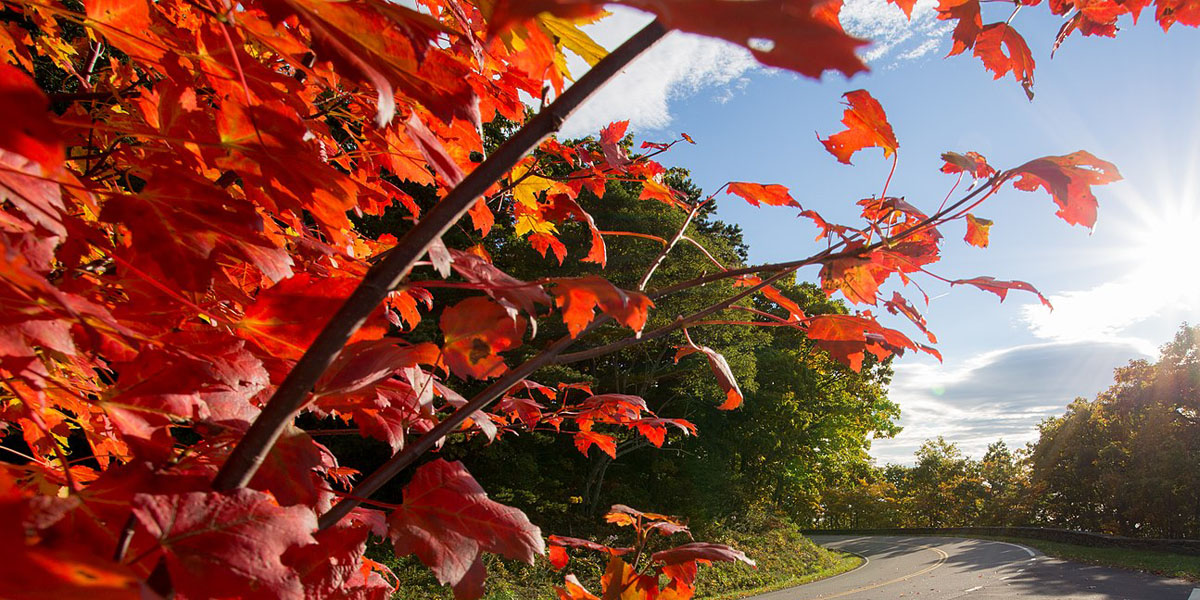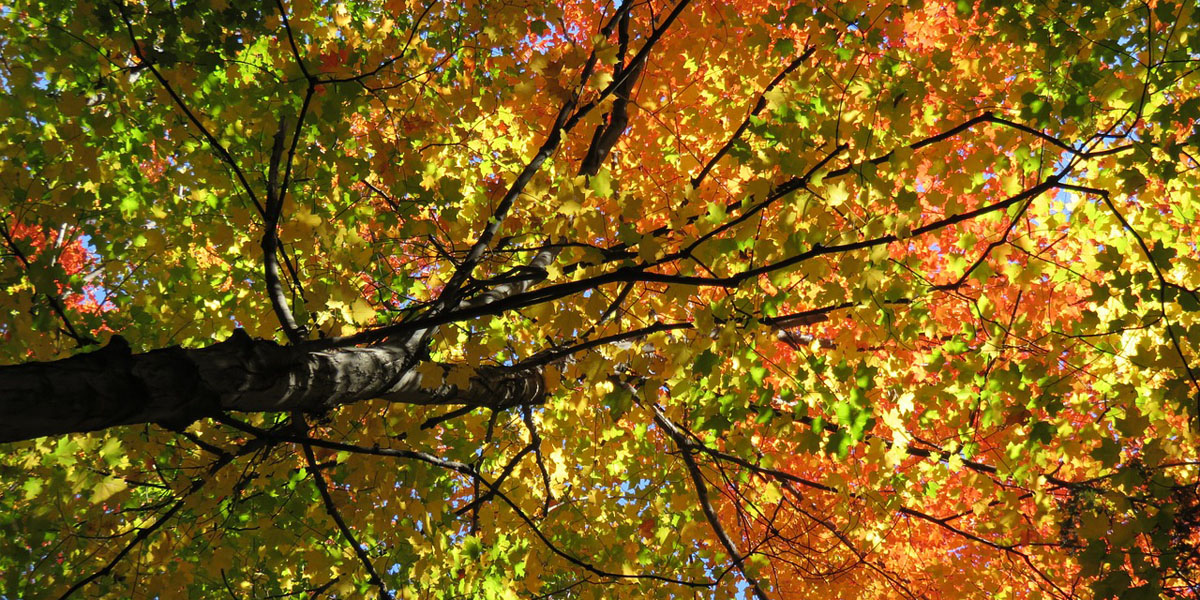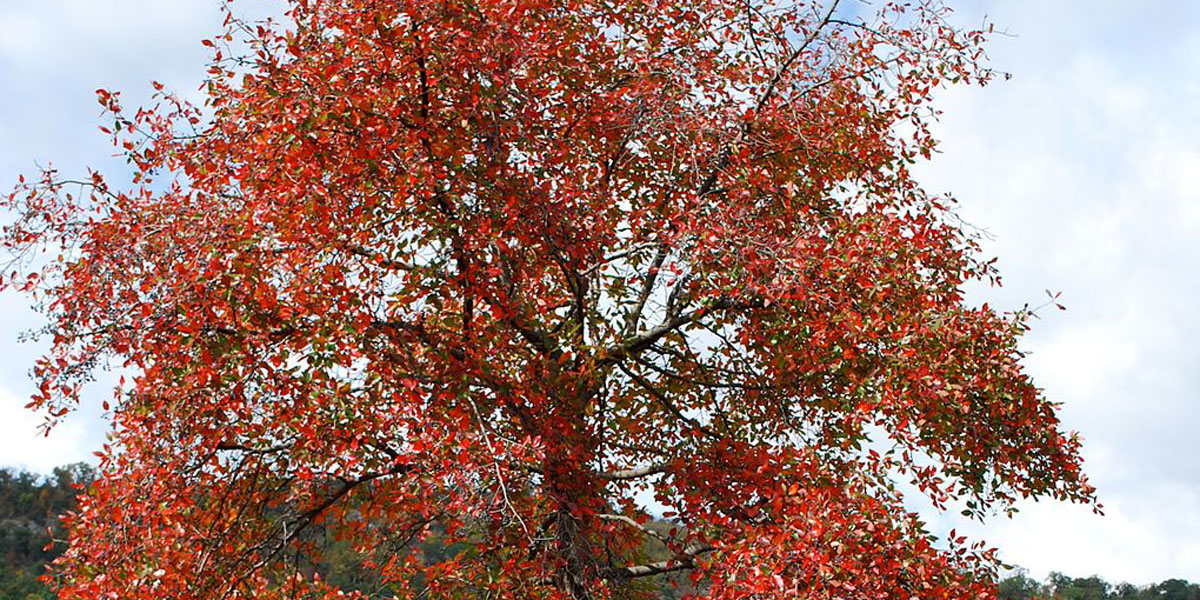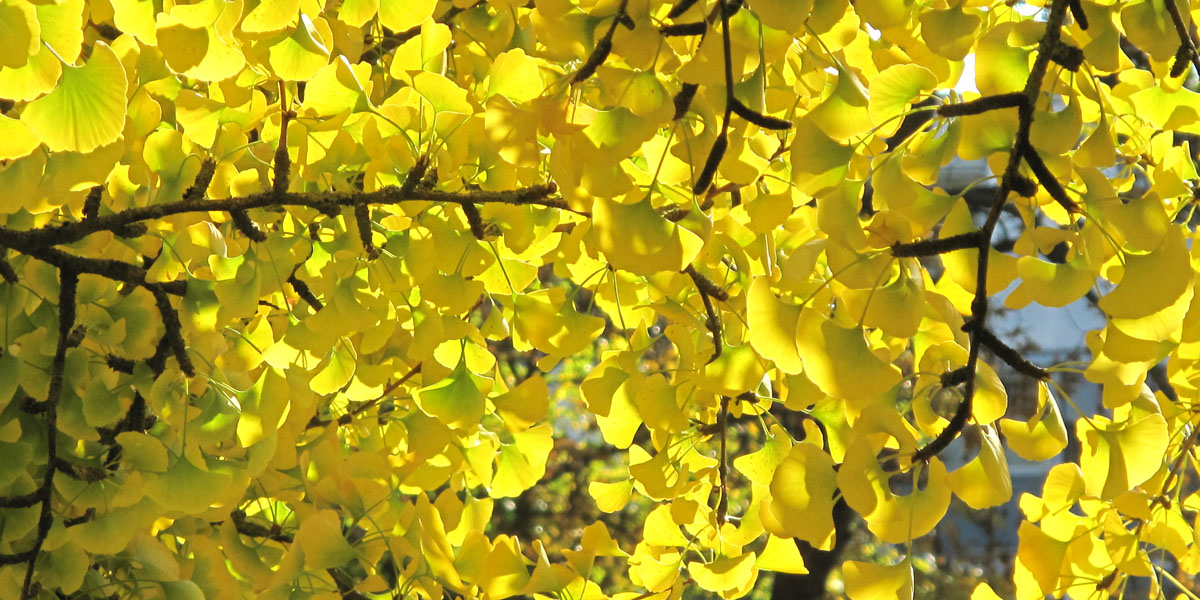School supplies, cooler temperatures, pumpkin spice lattes – what signals fall for you? For us, it is when the tree leaves start to change color.
While the green leaves of deciduous trees have existed calmly in the background during the summer months, during fall they being to really ask for attention with their vibrant reds, electric yellows, bright purples, and a variety of other shades and colors.
If you’re thinking of adding new trees to your property and want some color in your yard during the fall, we’ve put together a list of some of our favorite trees for fall color. You’re sure to find one here that will be perfect for your property.
Remember that most tree problems start with planting the wrong tree in the wrong place, so make sure you have enough room for whichever tree you choose. Also, keep in mind if a tree has messy pods, fruit or seeds that might create a mess in your yard or driveway. And, as a final note, be clear which cultivar you want; certain characteristics of the tree – including how tall it grows – are dependent on the cultivar that you choose.
Red Maple (Acer rubrum)
One of the most easily recognizable trees, the red maple, also called swamp maple or scarlet maple, turns brilliant shades of red or orange in autumn. A fast-growing tree, it can reach heights of 35 – 80 feet and a spread of 25 – 70 feet (depending on the cultivar).
Red maples like full sun and work well as a shade tree but shouldn’t be planted too close to sidewalks, driveways, or roadways as the roots tend to cause the pathways to buckle.
We love the cultivars ‘October Glory’ or ‘Red Sunset’ for their exceptional fiery-red foliage, while ‘Redpointe’ is usually fairly pest and disease resistant and still has beautiful fall color.
Sugar Maple (Acer saccharum)
Another kind of maple, the sugar maple, has more yellow to orange fall colors. It is a slow-growing tree that can tolerate shade (though it prefers full sun). Sugar maples are the most common types of trees for sugaring, where the trees are tapped for the production of maple syrup. They make a good shade tree, and bees love their flowers.
Sugar maples grow to an average of 60 – 75 feet tall with a spread of 40 – 50 feet. They are easily damaged by salt so don’t plant them near roadways or walkways that will be salted in the winter.
We recommend a number of sugar maple cultivars:
• ‘Legacy’ has very thick leaves that are resistant to drought damage
• ‘Fall Fiesta’ grows faster than other sugar maples
• ‘Sienna Glen’ has an attractive pyramidal shape
• ‘Wright Brothers’ is resistant to summer leaf scorch
Blackgum, Black Tupelo, Sourgum, Water Tupelo (Nyssa sylvatica)
If you’re looking for a smaller tree, this tree of many names might be a good option. Blackgum trees grow to about 30 – 50 feet tall and only 23 – 30 feet wide. They like full sun or partial shade, and produce small white flowers that provide valuable nectar for bees. The shiny leaves turn bright red in the fall. As a bonus, deer tend to avoid these trees.
We recommend the cultivars ‘Wildfire,’ which gives a pretty clear picture of the bright red fall color, or ‘Red Rage,’ which will invoke anything but rage when you’re greeted by its sought-after bright red leaves.
River Birch (Betula Nigra)
River birch trees not only have yellow fall foliage, their trunks provide interest all year round. The trunks have a unique red, tan, and pink peeling bark that will bring interest to your yard even in the winter months. Note, however, that river birch trees have extensive root systems and need plenty of room to grow. Figure on a spread of 40 – 60 feet and a height of 40 – 70 feet, with roots extending even further (so don’t plant river birch close to structures or sidewalks).
These trees love full sun or partial shade, and they grow quickly. As the “river” part of their name might imply, river birches thrive in wet or evenly moist soil conditions. Their branches can grow close to the ground and droop even more when wet, so either plant it away from driveways or prune it so that it doesn’t block access.
Cultivars to look for include ‘Dura Heat’ (so called because of its heat resistance) and ‘Heritage’, which can be grown as a multi-stemmed tree or pruned to have one central trunk.
Maidenhair Tree (Ginkgo biloba)
Ginkgo trees are recognizable by their fan-shaped leaves and the saffron yellow leaf color in fall. This tree loves full sun and will grow to 50 – 80 feet with a spread of 30 – 40 feet, although it grows at a slow to medium rate. The maidenhair tree does well in the cold, is resistant to wind and snow damage, and is somewhat tolerant of salt and poor air quality, making it a great tree for urban or suburban areas.
You may recognize the scientific name of this tree, Ginkgo biloba; it’s a popular supplement used to treat a wide range of conditions. Native to China, this tree is actually endangered, but if well cared for a ginkgo tree can live for 150 years or more!
The cultivar ‘Autumn Gold’ is recommended as it is a male cultivar (female ginkgo trees produce messy and horrible-smelling seeds) that will grow to about 40 – 50 feet tall. The yellow leaves, spectacular when backlit by the sun, will hang on for a few weeks in fall, and then all drop rapidly, creating a carpet of yellow leaves.
While the above trees are some of our favorites, this is by no means an exhaustive list. You might want something that also has visual appeal in the spring, like the flowering dogwood (Cornus florida). Flowering dogwood is a smaller tree, growing to only 20 – 40 feet. Best grown in partial shade, its leaves turn a deep reddish-purple in fall.
Or you might want the red leaves of the scarlet oak (Quercus coccinea), which towers to heights of 70 – 75 feet and provides acorns as food for wildlife. It prefers full sun and grows quickly.
Whatever tree you choose, we know that it will provide you and your family with numerous benefits for years to come.
Don’t forget that the tree care professionals at Alpine Tree can help you choose the right tree for your property, select the best location, and even plant it for you!









